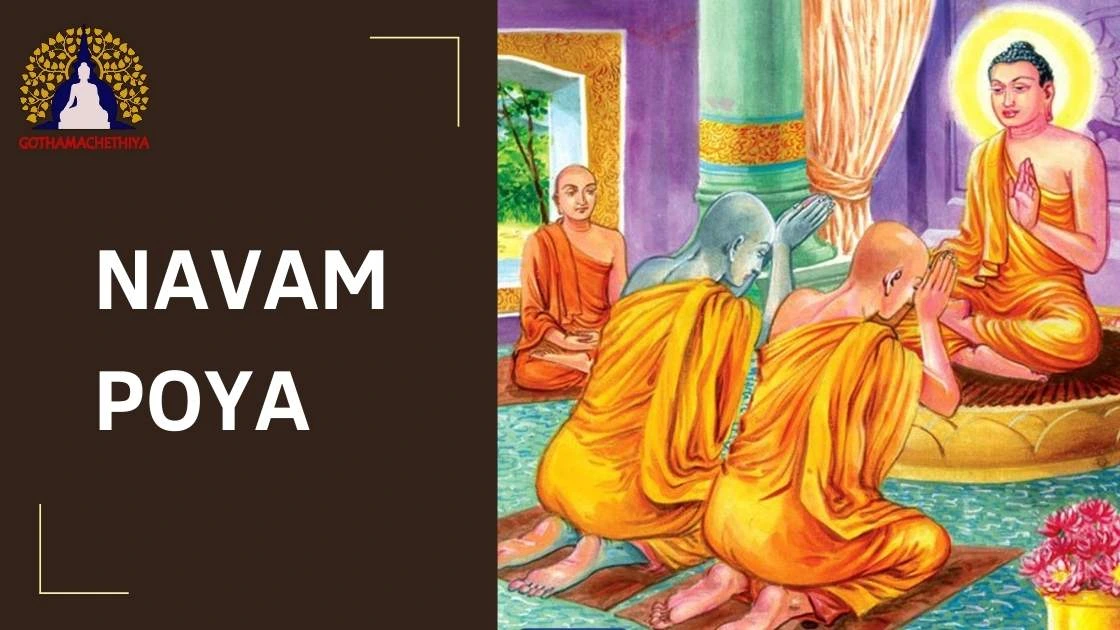Navam Full Moon Poya holds special significance in the hearts of Buddhists in Sri Lanka, marking two pivotal events that shaped the early foundations of Buddhism. This sacred occasion serves as a time of reflection, reverence, and commemoration.
Appointment of Chief Disciples
At the core of Navam Poya’s observance lies the commemoration of the appointment of Sariputta and Moggallana as the first two chief disciples (Aggasavakes) of Gautama Buddha. These esteemed disciples, renowned for their wisdom and spiritual prowess, played instrumental roles in the dissemination of the Buddha’s teachings.
Sariputta, often hailed as the “General of the Dhamma,” possessed an unparalleled understanding of Buddhist philosophy, contributing significantly to the explication and propagation of the Dhamma. Moggallana, distinguished by his extraordinary supernatural powers, added a dimension of awe to the Sangha, showcasing the diverse capabilities within the discipleship.
The First Sangha Gathering
Navam Poya also serves as a momentous reminder of the first Sangha gathering, an event that unfolded during the Buddha’s lifetime. During this gathering, the Buddha delivered the first Disciplinary advice to the monks, known as “Ovada Patimokkha.” This ethical guidance laid the groundwork for the monastic community’s conduct, ensuring the purity of the Dhamma and fostering a harmonious Sangha.
In temples across Sri Lanka, devotees engage in prayers, meditation, and rituals, retracing the footsteps of the early Sangha and expressing gratitude for the teachings that form the bedrock of Buddhist ethics.
The Buddha’s Detachment
Adding another layer of profundity to Navam Poya is the pivotal moment when the Buddha, three months before Vesak Poya, let go of the Life faculty. This act of detachment, occurring at the invitation of Mara, the evil one, symbolizes the Buddha’s transcendence beyond the realm of worldly existence. It marks a prelude to the ultimate attainment of Parinibbana on Vesak Poya day.
In this act of surrendering the Life faculty, the Buddha exemplifies the highest form of detachment, showcasing that true liberation lies in letting go of the transient and embracing the eternal. This poignant moment becomes woven into the fabric of Navam Poya, inviting devotees to contemplate the nature of impermanence and the path to ultimate liberation.
Observing Navam Poya Today
As devotees gather in temples adorned with vibrant decorations, Navam Poya becomes a celebration of spiritual heritage. Dressed in pure white, Buddhists engage in rituals, prayer, and acts of generosity. The observance of Sil, moral precepts, adds a dimension of ethical reflection to the festivities, fostering a sense of community and unity.
The full moon shines as a beacon of enlightenment, guiding Buddhists on a journey of introspection and reverence. Navam Full Moon Poya stands as a testament to the multifaceted spiritual legacy, intertwining the wisdom of Chief Disciples with the Buddha’s acts of detachment, creating a harmonious symphony of traditions that endure through the ages.

Add a Comment
You must be logged in to post a comment